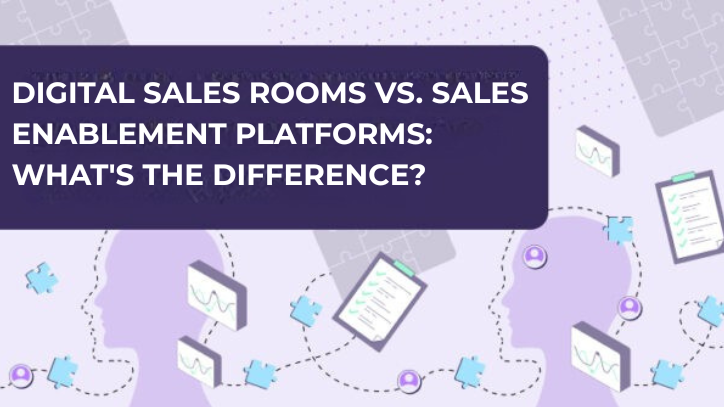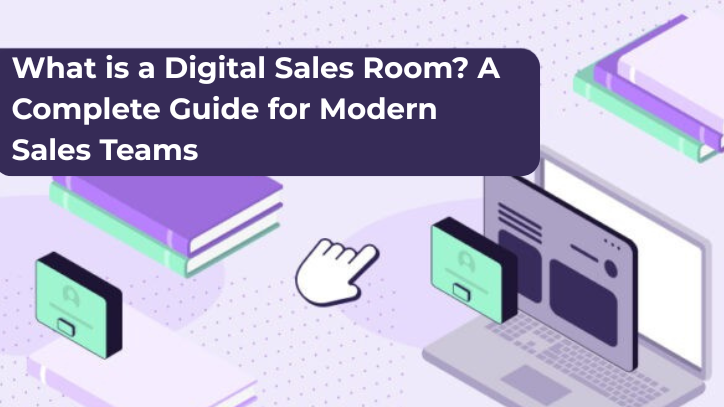What’s the forecast for your company’s SaaS sales?
Well, no offense to meteorologists everywhere, but hopefully you can get a more precise prediction when forecasting your sales than they do when they say to expect to rain. (If we have to bring umbrellas for no reason ONE MORE TIME…)
The problem is that just like predicting the weather, forecasting your SaaS sales is a complex procedure and is based on statistics and historical trends.
The good news is that with this blog, you’ll be able to get started on understanding sales forecasting methods, planning strategies, overcoming common pitfalls you may face, and how your sales demo data can help.
What is SaaS sales forecasting?
A sales plan or forecast is a spreadsheet report that compiles past sales performance data to inform future sales predictions.
One of the main benefits of sales forecasting is to estimate the number of sales you can expect to make in a given period. Keeping track of this data allows your sales teams to remain accountable and helps ensure that sales campaigns meet expectations and KPIs.
Sales forecasting is also a great way to adjust your strategy, sales approach, and marketing based on expectations. This helps to maximize the efficiency of your SaaS company and keeps all areas of your business aligned.
What’s more, when you anticipate demand, you can look at the wider process chain to see where you can make savings. Being able to predict higher levels of demand vs. lower levels enables this.
What are the main objectives of sales forecasting for SaaS?
Here are a few of the most common objectives of sales forecasting:
- Predict future sales based on historical data.
As a sales rep, manager, or sales team, your task is to meet or exceed the predictions. These quotas can only be realistic if they are based on an accurate sales forecast. - Help with decision-making, budgeting, and risk management.
By getting a clear understanding of where your business will be by the end of the quarter or the end of the year, you can better plan your other departments to meet those expectations. - Setting sales and revenue targets over the long term.
Don’t just think short-term. Use your sales forecast to understand how your business can grow in the years to come. - Improve the sales performance of your business.
Keeping an eye on your historical data and planning for the future helps your business increase revenue, improve customer satisfaction and retention, and more.
Challenges you might face when conducting a sales forecast for your SaaS
If we were you, we would be reading these benefits and the first thing we’d think is: What’s the catch?
There’s no “catch” to sales forecasting per se, but there are a few things you should understand before setting out:
Sales forecasting takes time.
You’re going to need to spend a considerable amount of time on this task since it involves gathering data, analyzing it, and forming predictions. It can be considerably more straightforward and quicker to carry out with the right technology.
Forecasting is never totally accurate.
Just like weather forecasts, no prediction will ever be 100% accurate. After all, it is just an educated guess. Unfortunately, you need to accept that there’s always a margin of error when it comes to predicting the future.
3 key steps to preparing for your SaaS sales forecast
You now know why to conduct a sales forecast. The next step is to conduct one.
Here are the main steps to get started with a sales forecast:
Step 1: Organize your sales pipeline
If you have not already done so, you need to create a system for your sales funnel pipeline. In most companies, this is handled via a shared CRM with predetermined stages for leads to pass through.
Of course, this will vary depending on your company and use cases. However, a sales pipeline may look like this:
- New lead: This could be a cold lead or someone that has reached out for more information.
- Qualified lead: A lead that has shown interest in your SaaS after qualifying questions from the sales team.
- Demo: When a lead requests a demo with your team, they can move to this stage.
- Proposal: Once you send the proposal, the lead can move to this stage.
- Opportunity won or lost: The lead purchases your SaaS, or the lead drops out of the process by going cold or confirming no purchase intent.
Create a list of stages for your pipeline and a standard operating procedure for use by all sales reps that determine when and why a lead moves from stage to stage. Share the guidelines with all team members.
Step 2: Set KPIs to measure success
You need to set out what you expect to see as results to measure performance. Sales quotas or KPIs can relate to revenue, appointments, calls, or other key sales metrics for your SaaS.
The important thing in this step is to understand what metrics you need to measure to evaluate the success of your sales campaigns.
First, choose what metrics you want to measure. Then, decide what you are trying to achieve. Finally, create a written plan that outlines how you will achieve each KPI.
Step 3: Allocate roles and responsibilities
In order to narrow down your sales forecast, you’ll need the help of marketing, sales, HR, and finance. Each department will have its insights to add to the forecast. For example, HR will confirm the budget allocated to additional sales resources, while marketing can confirm any changes to ad spending budgets or other campaigns that will impact the sales data.
So before you get started, assign roles to all of the relevant team members. Ensure that each team’s leaders are aware of what their team members are responsible for. Create a document with roles and responsibilities to share with the individuals and consider using a project management system to assign tasks and deadlines. Close the loop by creating a schedule for check-ins over the next quarters and months.
5 sales forecasting methods to predict your future
Next, you need to decide which of the sales forecasting method you will implement. There is no right or wrong answer, and it will depend on your business model, budget, team size, and other factors.
Here are the most common sales forecasting methods you can implement to predict your future SaaS sales:
Opportunity stage forecasting
Every sales pipeline has a series of stages, from cold lead to close. While the exact stages will vary from company to company, it’s likely that the closer a prospect gets to the final stage of the pipeline, the higher the probability is that they will make a purchase.
Therefore, this method involves using the data inside your sales pipeline. Select a timeframe, select a weight or score to allocate to each deal in a specific stage, and then multiply the value of the deal by the probability of closing. Rinse and repeat until you’ve done this for all of the deals in the pipe.
It may not be the most accurate method (for example, you treat a deal waiting in a stage for months the same as a lead that’s sped straight through the stages), but it’s simple and easy to do.
Length of sales cycle
This technique tells you to set a probability based on how long the prospect has been in conversation with the rep.
For example, if your average sales cycle is three months, a lead that has been in the pipeline for two months should be one month away from closing, while a new lead may still have three months of nurturing to go.
Granted, it’s simple, but it doesn’t consider those leads that come in ready to buy. The lead that lands in your inbox completely sold on the product. It also doesn’t account for leads that go cold but still interact with you, so there’s a margin for error.
Intuitive forecasting
You can rely on your team’s information and simply ask how close the lead is to closing. You then use this qualitative data to create an Excel model that shows the probability of a lead closing and the level of revenue.
On the one hand, it’s clear the sales rep will have the most up-to-date information and may be able to estimate the timeframe and deal size accurately. However, on the other hand, it is leaving your forecast to guesswork and gut feelings, neither of which are the best for statistical analysis.
Historical forecasting method
One straightforward way to do this is to take the same period of time (for example, Q4) and use the sales figures for the past year to estimate the forecast for the following Q4. It’s easy, but it leaves a lot of room for error.
You may have added additional resources, more products, or there may be external market forces that increase or decrease demand. Use this method only as a guide and not an actual forecast.
Multivariable analysis
The multivariable analysis method is complex, but it’s likely the most accurate. It involves using all of your available data, such as sales cycle, ramp time, sales resources, seasonality, historical data, and so on. While it’s accurate, you will need a data analysis tool and someone trained in the process, so it’s not a small undertaking.
Choose the method best suited for the KPIs you want to measure and meet. Then make sure you understand the technique and have the tools you need to implement it.
Use your demo data to improve your forecasting
At Walnut, we are revising the way that sales teams demo their products. Instead of waiting for the “demo phase” to show your prospects your solution, Walnut lets you create personalized product demos that are interactive and customized for each prospect. This allows sales teams to better cater the buying journey for each buyer.
Unlike traditional demos, you can also introduce your prospects to experience your product early on by embedding interactive product tours on your website, utilizing them in your marketing collateral, and sending customized demos following sales calls.
Throughout the buyer journey, you can be using your demo analytics to inform your sales forecast. The in-built analytics allow you to learn what features your customers like, where they drop off, and which demos lead to the highest conversion rates. By understanding how your interactive demos generate sales, you can optimize the offering to increase conversions.
If you haven’t yet, book a meeting with us now by clicking that big purple “Get Started” button on the top of the screen.





